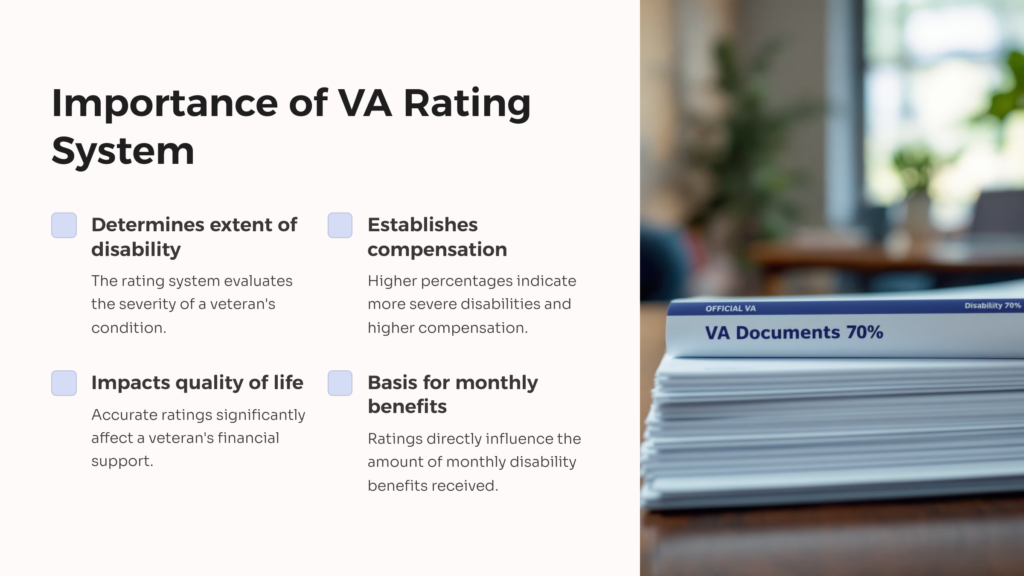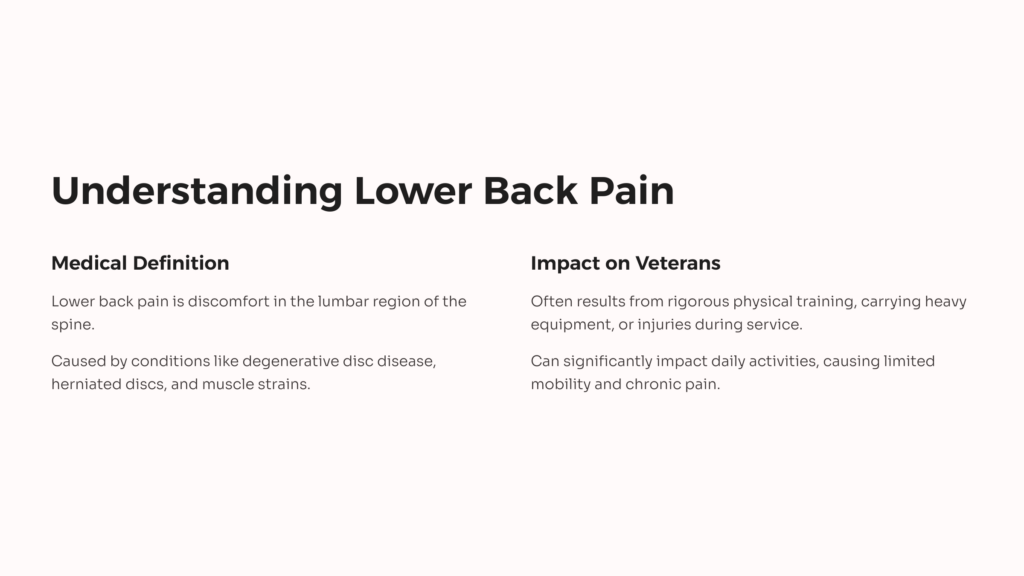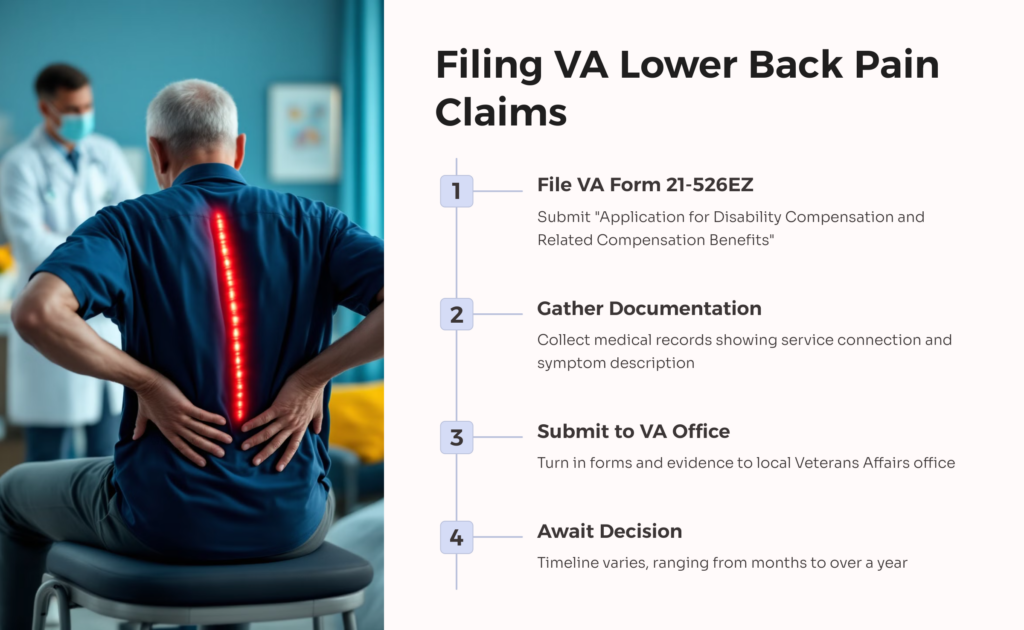I. Introduction
Veterans Affairs (VA) Disability Compensation programs serve to evaluate and compensate American veterans who’ve suffered from physical ailments or injuries related to their term of service. One such condition that is fairly common among veterans is low back pain. This post aims to provide a comprehensive understanding of how the VA disability rating system calculates ratings for lower back pain and the significance of these ratings for veterans and their VA benefits.

II. Importance of the VA Rating System
The VA rating system is part of the VA disability process, and it determines the extent of a veteran’s disability and the consequent VA disability compensation they are entitled to. Rating disabilities effectively establishes the basis for monthly VA disability benefits that veterans receive, with higher percentages indicating more severe disabilities and, therefore, higher VA disability compensation. For veterans with low back pain, the importance of an accurate and fair evaluation for their VA disability claim cannot be overstated. A slight difference in the rating could impact their quality of life significantly.
III. Understanding Lower Back Pain

Lower back pain is medically defined as discomfort in the lumbar region of the spine. It’s caused by conditions such as degenerative disc disease, herniated discs, and muscle strains typically from overuse or spinal injury. Veterans often suffer from lower back pain due to rigorous physical training, carrying heavy equipment, or sustaining injuries during their service. This condition can significantly impact daily activities, often resulting in limited mobility, persistent chronic pain, and psychological distress.
IV. Detailed Look at VA Lower Back Pain Ratings
The VA rates lower back pain using their General Rating Formula for the Spine, which assigns ratings from 0% (least severe) to 100% (most severe) depending on factors such as range of motion and functional loss. For example, a veteran with a forward flexion of their thoracolumbar spine of 60 degrees or more may receive a 0% rating. Conversely, a veteran with unfavorable ankylosis of the entire spine might receive a 100% rating.
There have been cases where veterans with considerable lower back pain were given a 20% VA rating for lower back pain, while others with similar conditions received 40% based on thorough medical examinations that adequately highlighted their limitations.
V. VA Lower Back Pain Claims

Claiming disability benefits for lower back pain involves filing a VA Form 21-526EZ, known as the “Application for Disability Compensation and Related Compensation Benefits.” Documentation required includes medical record showing the lower back issue is service-connected and a description of symptoms, severity, and frequency. To submit your VA claim, you will turn in the right VA form as well as any important medical record or other evidence to your local Veterans Affairs office.
The timeline for a VA disability claim process depends on several factors, including the complexity of the case and the availability of evidence, and may range from a few months to over a year.
VI. Common Issues and Resolutions in VA Lower Back Pain Ratings
Veterans often encounter challenges in procuring the right rating, such as under-assessment of their condition or lack of clarity on the impact of their condition on daily life. It’s crucial to be proactive in gathering comprehensive medical evidence and consider consulting with a VA-certified attorney to help navigate the process.
Obtaining an independent Medical Examination can also bolster your VA claim. Continuing advocacy and fighting for correct ratings are essential, and if a veteran believes their disability has been undervalued, they can appeal or request a rating decision review.
The VA disability rating for lower back pain plays a critical role in determining the compensation veterans are entitled to receive. It’s of paramount importance for veterans to acquaint themselves with how this system works to ensure they receive fair benefits for their ailments. Understanding the process and potential hurdles can make all the difference, and advocating for equitable ratings should always be a priority.
 AllVeteran.com Advisors
AllVeteran.com Advisors
With expertise spanning local, state, and federal benefit programs, our team is dedicated to guiding individuals towards the perfect program tailored to their unique circumstances.











